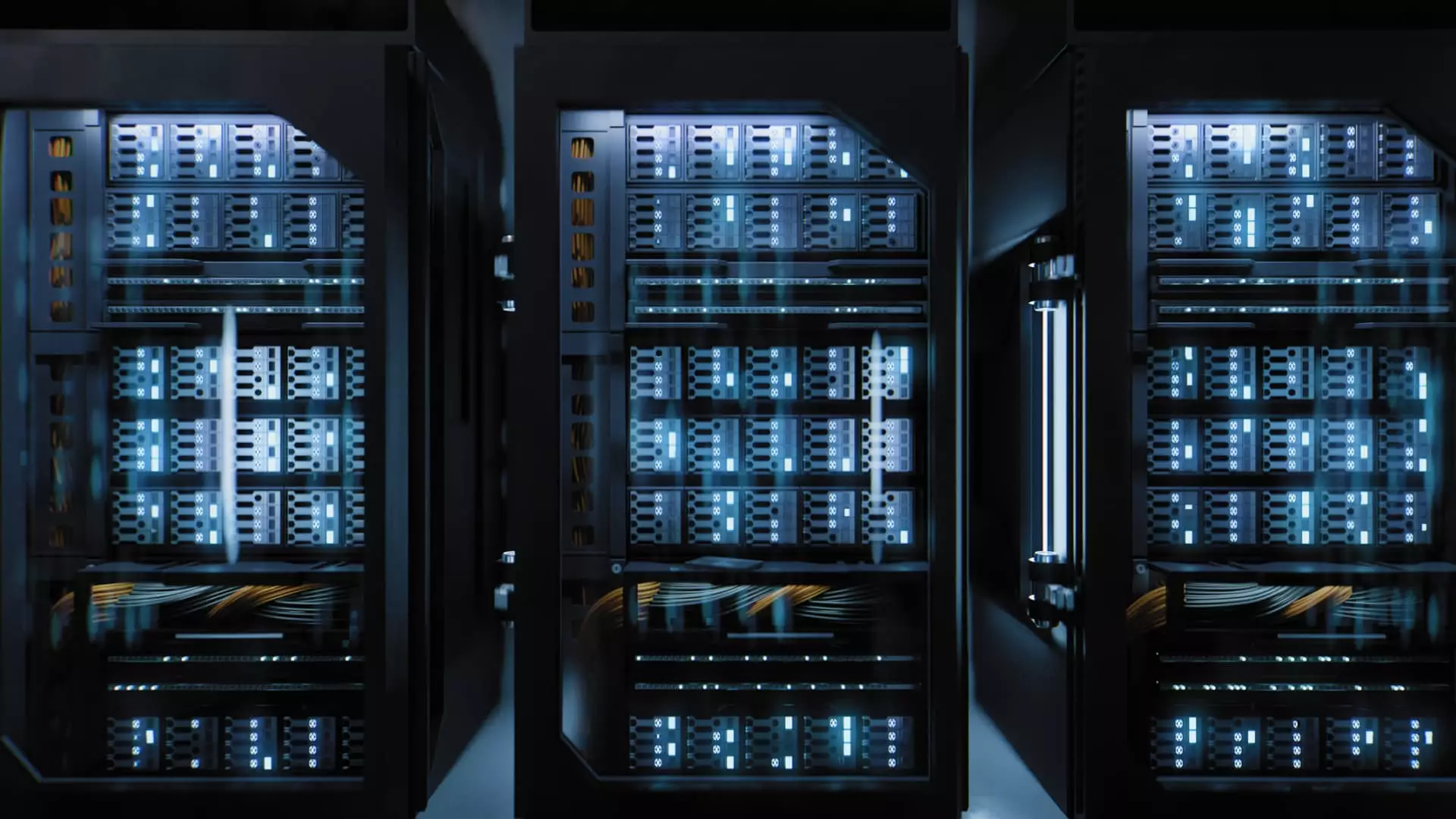Artificial intelligence (AI) is rapidly evolving, transforming industries and creating significant demand for data processing capabilities. However, this surge in AI technology raises serious environmental concerns, especially regarding the operation of data centers in Europe. As AI companies and infrastructure developers grapple with enhancing performance while managing energy consumption, there is an urgent need to reassess how data centers operate sustainably.
Research from Goldman Sachs indicates a staggering 160% growth in demand for data centers by 2030, largely attributed to the rising reliance on AI technologies. Such growth poses a challenge to Europe’s decarbonization objectives. Enhanced AI applications, particularly those employing advanced graphics processing units (GPUs), contribute significantly to increasing energy consumption. The GPUs enable the training of complex models but generate substantial heat, necessitating effective cooling solutions that consume additional energy. Consequently, this challenge leads to a paradox where an increase in AI efficiency could inadvertently escalate overall energy use.
Cooling Challenges and Temperature Regulations
The need for effective cooling has become paramount in the design and operation of data centers. The latest AI chips, capable of handling vast amounts of information, generate heat that demands a cooling approach involving colder water temperatures. This requirement conflicts sharply with existing European energy policies that prioritize reducing energy consumption and enhancing efficiency. Experts, including Michael Winterson from the European Data Center Association (EUDCA), have voiced concerns that the push to lower water temperatures could regress Europe’s progress towards sustainable energy practices, reminiscent of conditions faced two decades ago.
The dynamic in which U.S. chip manufacturers are pushing for lower cooling temperatures adds complexity to this scenario. As competition heats up in the realm of AI, the American market prioritizes speed and performance over environmental considerations. The pressure from U.S. firms, such as Nvidia, on European equipment suppliers for adaptations in cooling processes signals a growing imbalance. There is a risk that European data centers must shift their resources towards accommodating these demands, inadvertently sidelining their sustainability commitments.
Energy Efficiency Initiatives by the European Union
Amidst these challenges, the European Commission has set forth ambitious initiatives aimed at promoting energy efficiency. One such measure is the Energy Efficiency Directive, which mandates data centers to publicly disclose power consumption data. However, the projected rise in energy needs for data centers due to AI could undermine these aspirations. Estimates indicate that energy consumption could soar by two to three times the previously anticipated 28% increase by 2030, further straining resource allocation.
Engaging discussions between energy management firms and EU officials highlight a growing need for strategies focusing on alternative energy sourcing and collaborative efforts with utility companies. The emphasis on “prime power” seeks to address concerns related to power consumption with new AI data centers. This collaborative approach could mitigate some of the looming challenges posed by rising energy demands.
In response to escalating energy concerns and infrastructure challenges, companies are exploring innovative cooling technologies. For example, liquid cooling has emerged as a viable solution, enabling more efficient heat dissipation. While transitioning to liquid cooling technology requires initial adjustments and investments, experts believe it can ultimately lead to greater operational efficiency. Organizations such as Equinix are actively participating in discussions about optimizing server densities and balancing power usage with cooling needs to adapt to the evolving landscape.
Nvidia’s introduction of the Blackwell GPU architecture presents another layer of complexity. Promising substantial enhancements in performance, it simultaneously raises questions about compatibility with existing cooling practices and energy requirements. The changing technology landscape necessitates flexibility and adaptability from data center operators, who must navigate the complexities of increased demand while adhering to sustainability standards.
The Path Forward
As the data center industry faces challenges intensified by AI growth, a multifaceted approach is necessary to strike a balance between technological advancement and ecological responsibility. Collaboration between chip manufacturers, infrastructure developers, and European regulatory bodies will be crucial to establishing standards that prioritize sustainability without sacrificing performance.
Investments in progressive cooling solutions, alongside proactive policy engagement, can help ensure that the data center sector aligns with broader energy efficiency goals. Without a concerted effort to address these issues, the burgeoning demand for AI could lead Europe down a path of unsustainability, fundamentally undermining decades of progress towards responsible energy usage and environmental stewardship. Therefore, stakeholders must step up to meet the demands of the future while safeguarding the planet for generations to come.


Leave a Reply